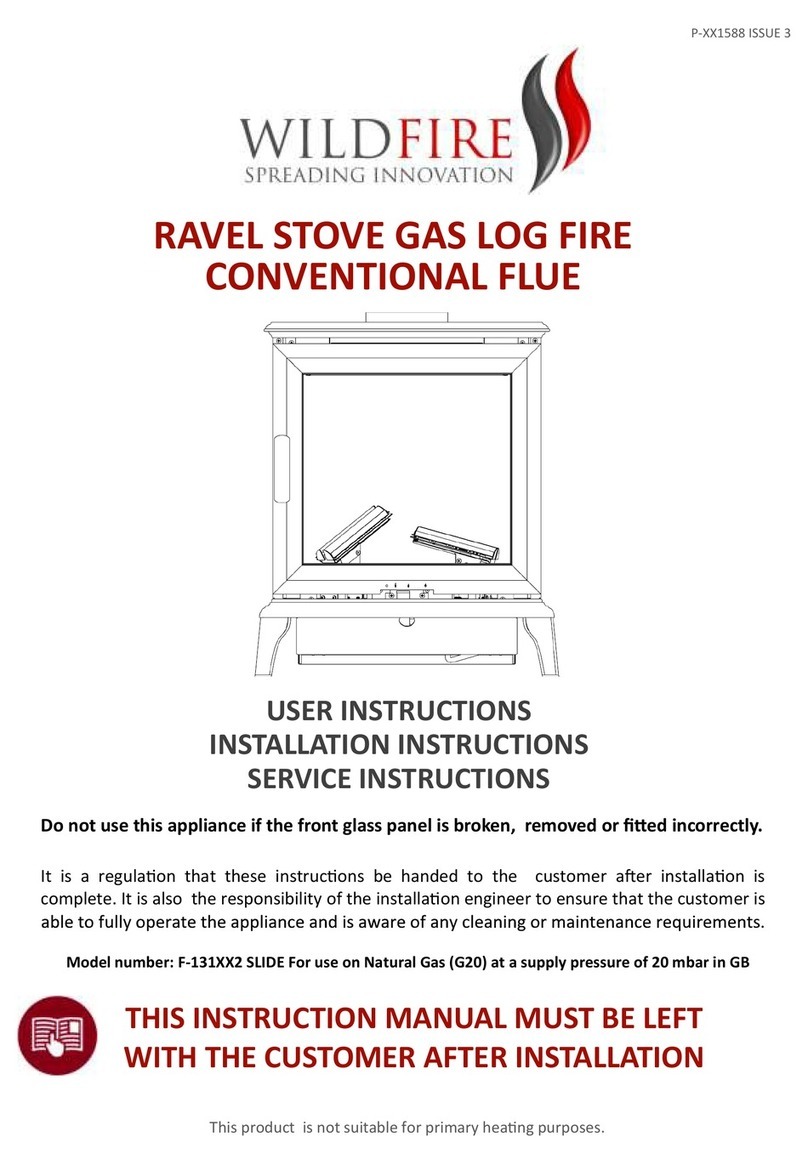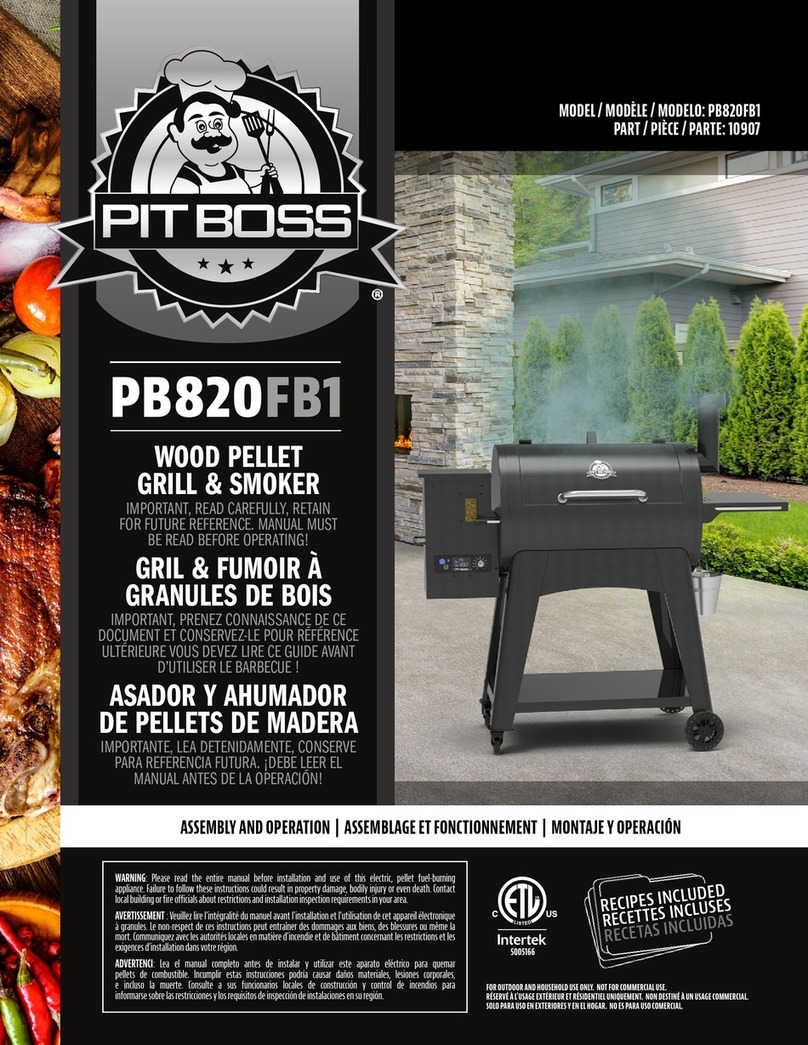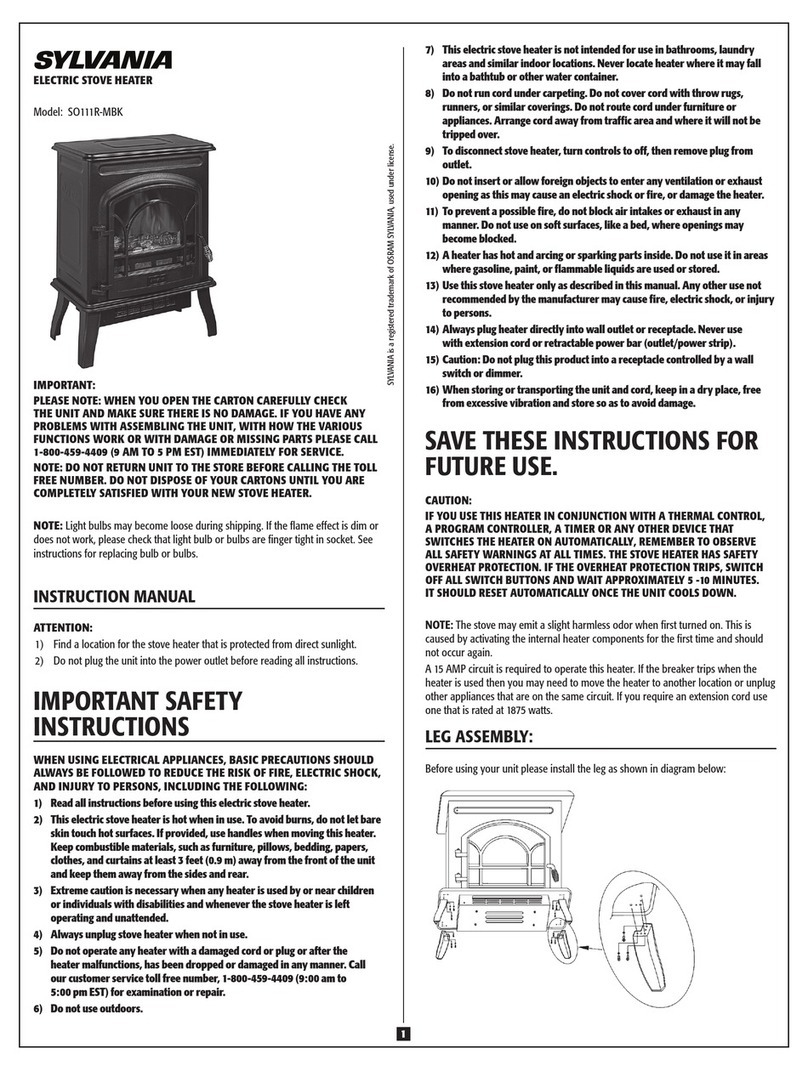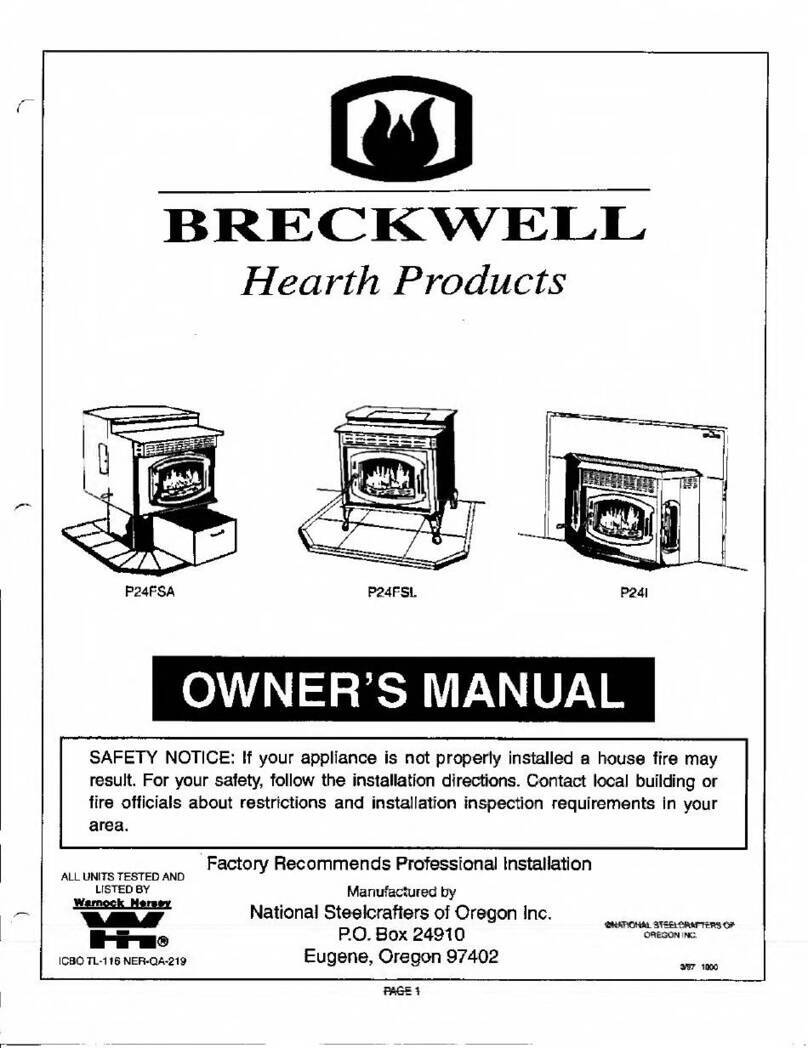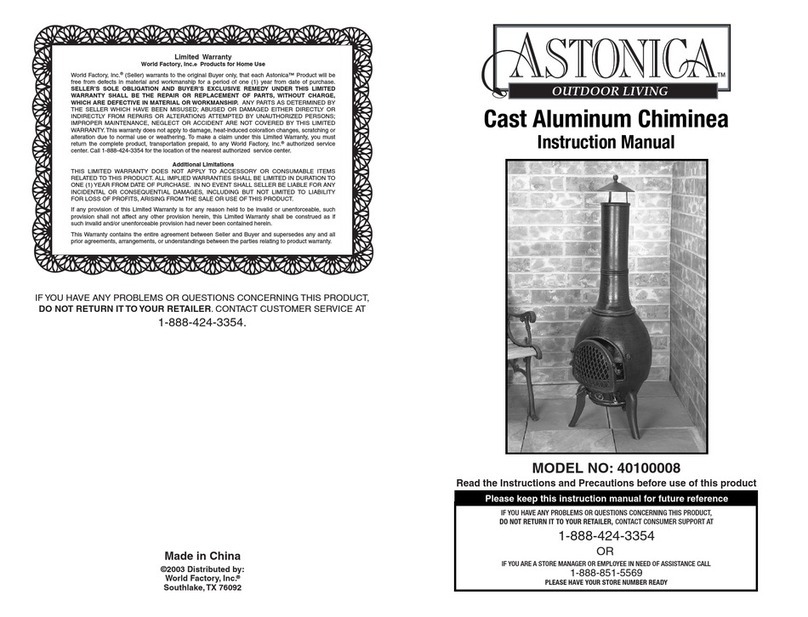
3.2.1. Primary Air
Primary air is controlled through the assembly on the bottom of the door. This provides a conventional air
draught which passes through the fuel bed. The primary air intakes can be adjusted to control the fire in
combustion chamber.
3.2.2. Secondary Air
The appliance is fitted with an air wash system which can keep the heat-resistant glass of the fire
door clean. This secondary air is controlled through the fittings on the bottom of the stove.
3.3. Grate
There are Two options: Rotary style and grid style. For rotary style grate, you can operate it by
dragging a stainless-steel rod forward and backward to de-ash. For grid style grate, a special hook is
supplied to de-ash. It is highly recommended to de-ash regularly in case any build-up of ash will
damage the cast iron fuel bed. You should be careful of any hot parts.
3.4. Ashpan
It is essential that you clean up the ashpan regularly. Use the supplied tool to lift the ashpan out of the
stove.
3.5. Burning Mineral Smokeless (Solid Fuel)
DO NOT have more than a 30-degree incline of the fuel bed from front to back, when you put solid mineral
fuels on the fuel bed. The height of loading fuels must not exceed the rear cast iron lining.
The refueling intervals at nominal heat output will be approximately every 4 hours. We suggest you
refuel in time to get the best possible results. When using solid mineral fuels, we suggest you keep the
secondary air control in the closed position, so it can burn at maximum efficiency. At this time the
primary air controls can adjust the burn rate of the appliance.
To prevent the ash from being stacked to the underside of the bottom grate, please always de-ash
before refueling. Once the ash builds up, it is possible that it will restrict the airflow and cause the fire
to die.
Important! It is very important to empty the ashpan regularly. In case the ash builds up the underside of the
grate, burnout or distortion of the grate may be caused.
3.6. Burning Wood
The refueling intervals at nominal heat output will be approximately 1.5 hours. You may load wood
higher in the stove than solid mineral fuel, but wood or logs are not permitted to touch the baffle plate.
Wood burns most efficiently with the primary air controls closed and the secondary control partially open.
Moving the secondary control will control the burn rate of the stove.
Wood burns best with a layer of ash on the fuel bed, and care should be taken to only remove surplus
residue from the stove timely.
We recommend you only use dry, seasoned wood as fuels; the wood should have been cut, split and stacked
for at least one year in a circulating air surround to dry out. Otherwise, wet or unseasoned wood will cause
tar deposits in the stove and unsatisfactory heat output will occur.
We recommend the use of wood logs with a moisture content of less than 20% .
Burning wet or unseasoned wood will create excess smoke emissions, tar deposits in the stove and chimney
and will not produce a satisfactory heat output. Wood fuel purchased from an approved source may still
require some drying out to remove surface water before use.

